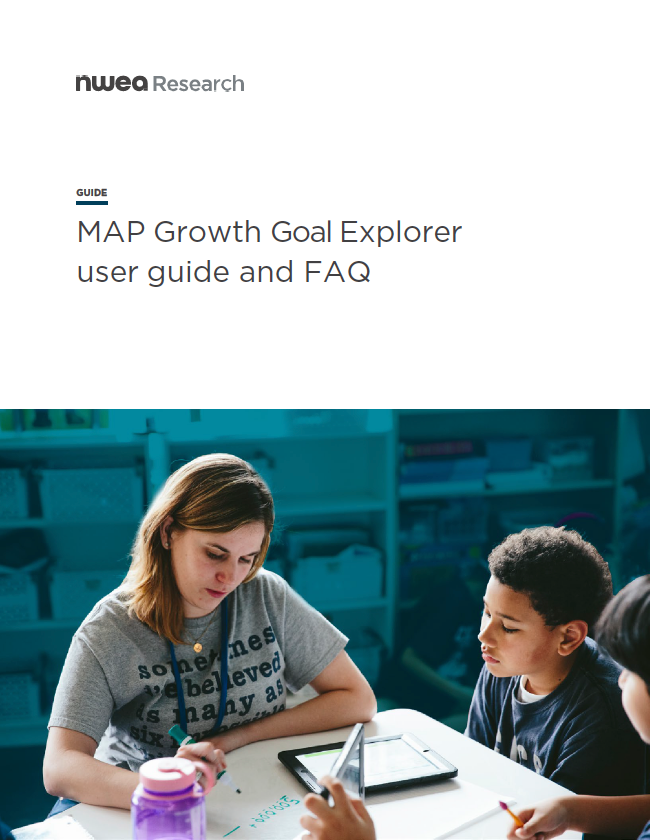

MAP Growth Goal Explorer
All students deserve the opportunity to work toward meaningful and realistic academic goals

The MAP Growth Goal Explorer is designed to support and simplify the goal-setting process by showing a range of possible fall-to-spring growth goals against the backdrop of important academic benchmarks. This tool is intended to help teachers, families, and students work together to establish goals that strike a balance between what is meaningful and what is realistic.
FAQ
A computer adaptive assessment used to measure your student’s achievement level and growth over time. Teachers can use MAP Growth results to differentiate instruction, identify student strengths and weaknesses, and tailor classroom lessons to meet your student’s needs.
The overall score for a subject based on a Rasch unit (RIT) scale that indicates how your child performed in a subject area.
Achievement: How well a student has learned skills in a subject compared to similar students nationwide. Growth: A measure of a student’s progress over the year.
The percentage of students in the US population for this grade and subject area that this student’s score equaled or exceeded.
Similar students are those with approximately the same starting RIT score, the same number of weeks of instruction, and in the same grade and subject area.
Directions
- Go to the “Let’s Get Started” section.
- Then enter your student’s grade, state, fall RIT score, and test subject (math or reading).
TIP: Teachers can locate RIT scores in the Student and Class Profile reports. Families can locate RIT scores in the Family Report.

Research that sharpens focus and drives action
Using the powerful data generated by NWEA assessments, our research team investigates issues that are timely, relevant, and actionable to today’s educators. See how their essential work translates into insights that shape conversations about teaching and learning.
Get Expert Guidance, Tailored to Your Goals